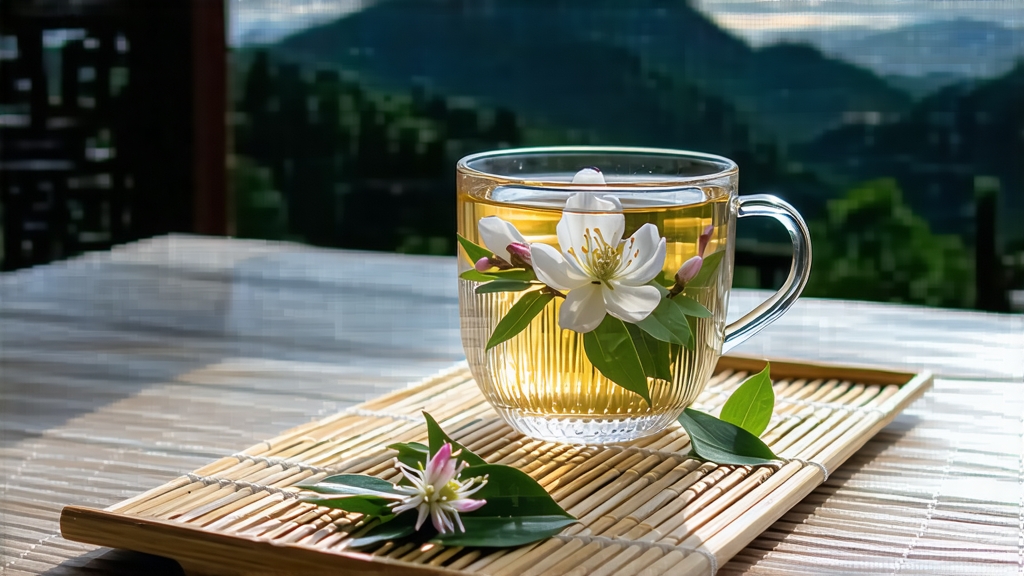
Bai Hao Yin Zhen—literally “White Hair Silver Needle”—is the quiet aristocrat of Chinese tea. To the uninitiated it looks like nothing more than a handful of pale twigs, yet in the cup it releases the scent of fresh rain on hay, the taste of mountain springs, and a lingering honeyed calm that can haunt the palate for hours. Revered since the late-Song dynasty yet exported only in tiny quantities until the 1890s, Silver Needle is harvested for only a few spring mornings each year, handled only with gloves, and never touched by machines. Understanding it is less a lesson in agriculture than an exercise in listening to silence.
Origins and legend
The cultivar story begins in northern Fujian, where the Min River bends toward the East China Sea. Local chronicles credit a tea-loving magistrate named Chen Hua for grafting wild Da Bai Hao (“Big White Down”) bushes onto monastery gardens around Taimu Mountain in 1796. Monks discovered that when the buds were left to air-dry without any heat, the tiny white hairs that cloak each tip refracted light like silver filaments, giving the tea its poetic name. By 1885 Fuding county merchants were packing the buds into lead-lined tins bound for Hong Kong and, eventually, the European courts where “China White” became a fashionable slimming tonic for Edwardian ladies. Today the European Union recognizes Fuding and neighbouring Zhenghe as protected origins; buds grown elsewhere may be white, but they may not legally be called Yin Zhen.
The two sub-styles
Purists divide Silver Needle into “North Needle” (Fuding) and “South Needle” (Zhenghe). North Needle gardens sit at 200–600 m on red granitic soils; the buds are plump, needle-straight, and high in amino acids, yielding a liquor that is almost colourless yet thick like silk. South Needle grows on darker volcanic loam at slightly lower altitude; the buds are slimmer, a little more curved, and develop a deeper, hay-like fragrance during the longer wither. Neither is superior; they are siblings with different accents.
Plucking etiquette
The picking window opens when the last spring frost has passed and the first swallowtail butterflies appear—usually between 15 March and 10 April. Only the unopened bud, still sheathed in its first two leaves, is taken. Experienced pickers use a twisting motion rather than a snap to avoid bruising the cell walls; oxidation must wait until the leaf is consciously invited to breathe. A full kilogram of finished tea requires roughly 30 000 buds, all plucked before noon when moisture levels are below 75 %. The work is done in silence; talking is believed to warm the air and darken the leaf.
Craft: the art of doing almost nothing
Silver Needle is the least processed of all teas, yet its minimalism is exacting. The buds are first spread on bamboo trays 1.5 cm thick and left under shade nets for 24–36 h; indoor humidity is kept at 65 % and temperature below 28 °C. During this “soft wither” the buds lose about 40 % moisture and develop a faint apricot note. They are then moved to sunning courts where morning light is filtered through reed blinds; every 20 min the tea master fluffs the pile so each needle receives the same kiss of ultraviolet light. If clouds gather, charcoal-heated wind tunnels are used, but the air temperature must never exceed 34 °C. Finally the buds rest in a cool room for 48 h to “return to life”—a post-wither equalisation that softens astringency. No rolling, no pan-firing, no baking: the goal is to persuade water to leave while persuading enzymes to stay.
Grading and ageing
Unlike green tea, Silver Needle improves—transforms—when stored correctly. The highest grade, “Imperial,” contains 98 % intact buds with at least 1.2 cm length and a visible pearl of dormant leaf inside. Such lots are packed in Xuan-paper and bamboo-shell cylinders, then left to breathe in limestone caves where year-round humidity hovers at 55 %. After seven years the liquor turns amber and develops notes of sandalwood and dried longan; after fifteen it acquires a camphor coolness prized by Guangdong tea merchants who